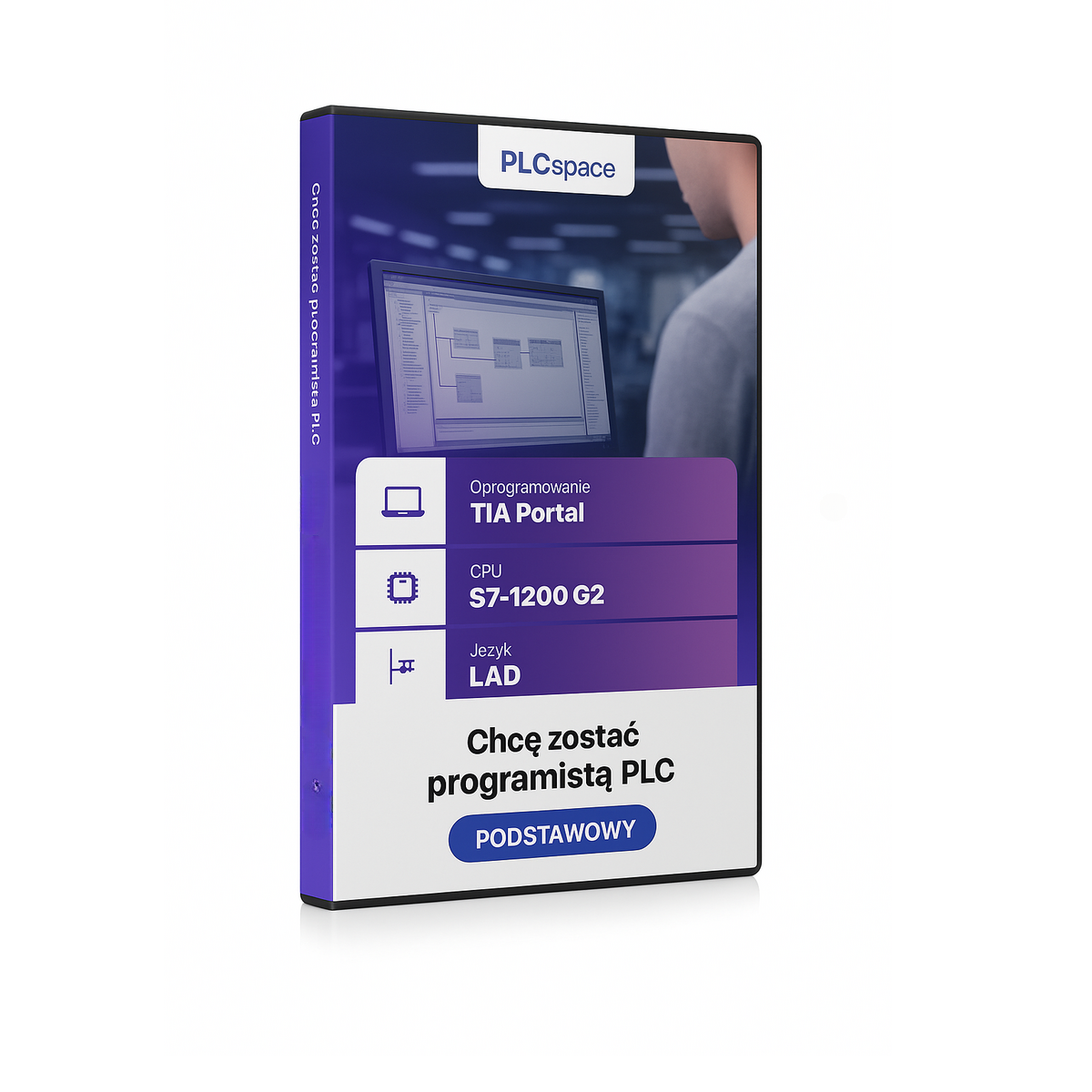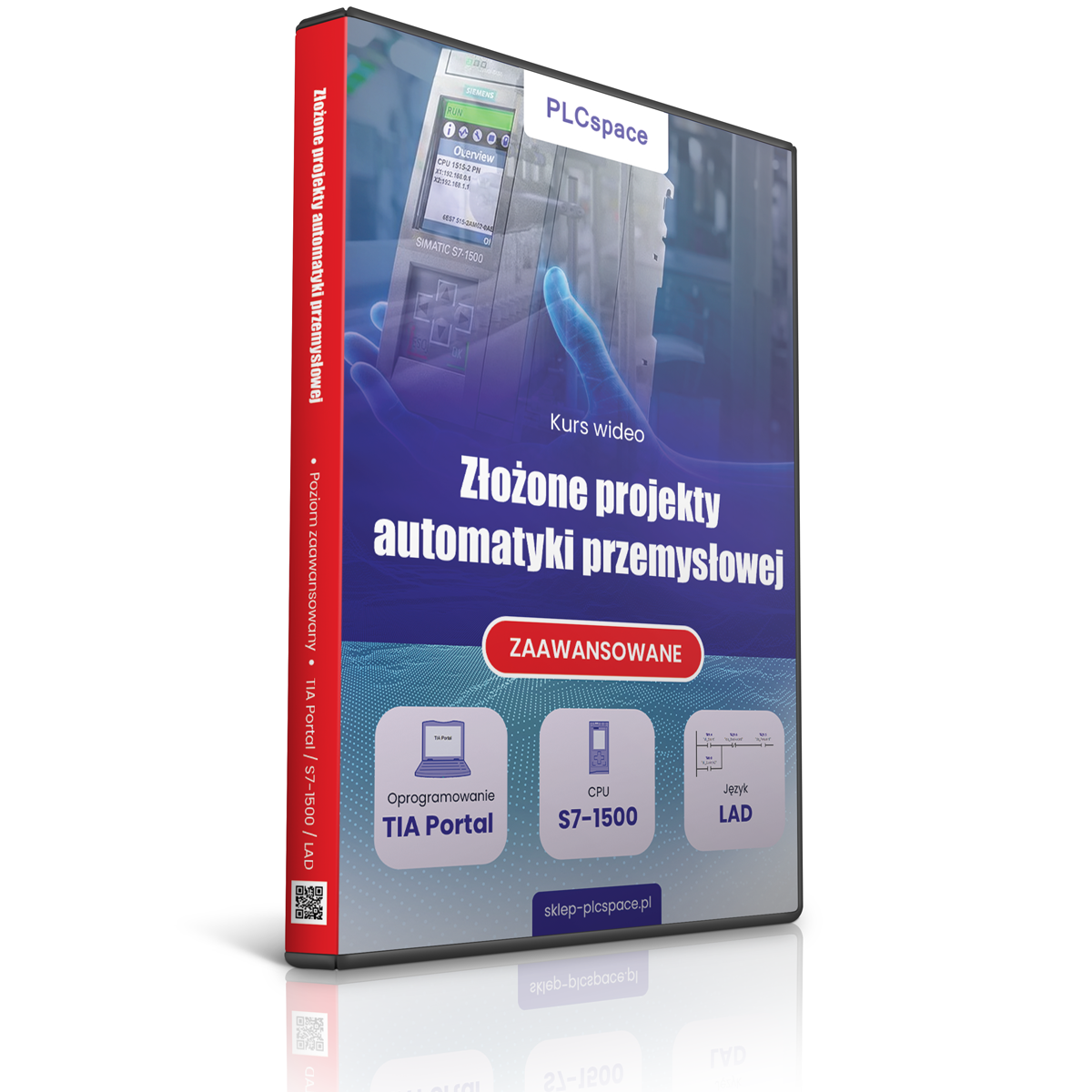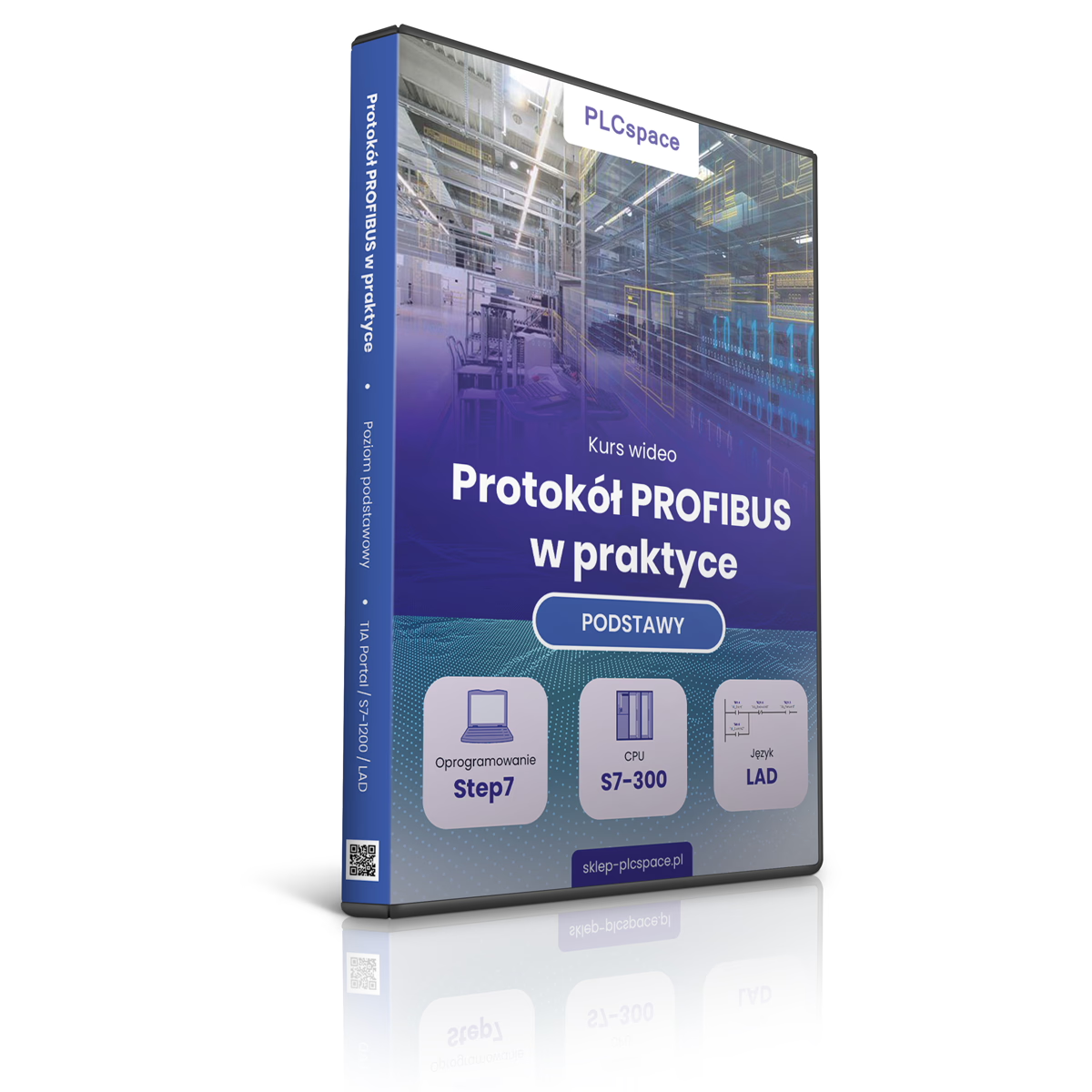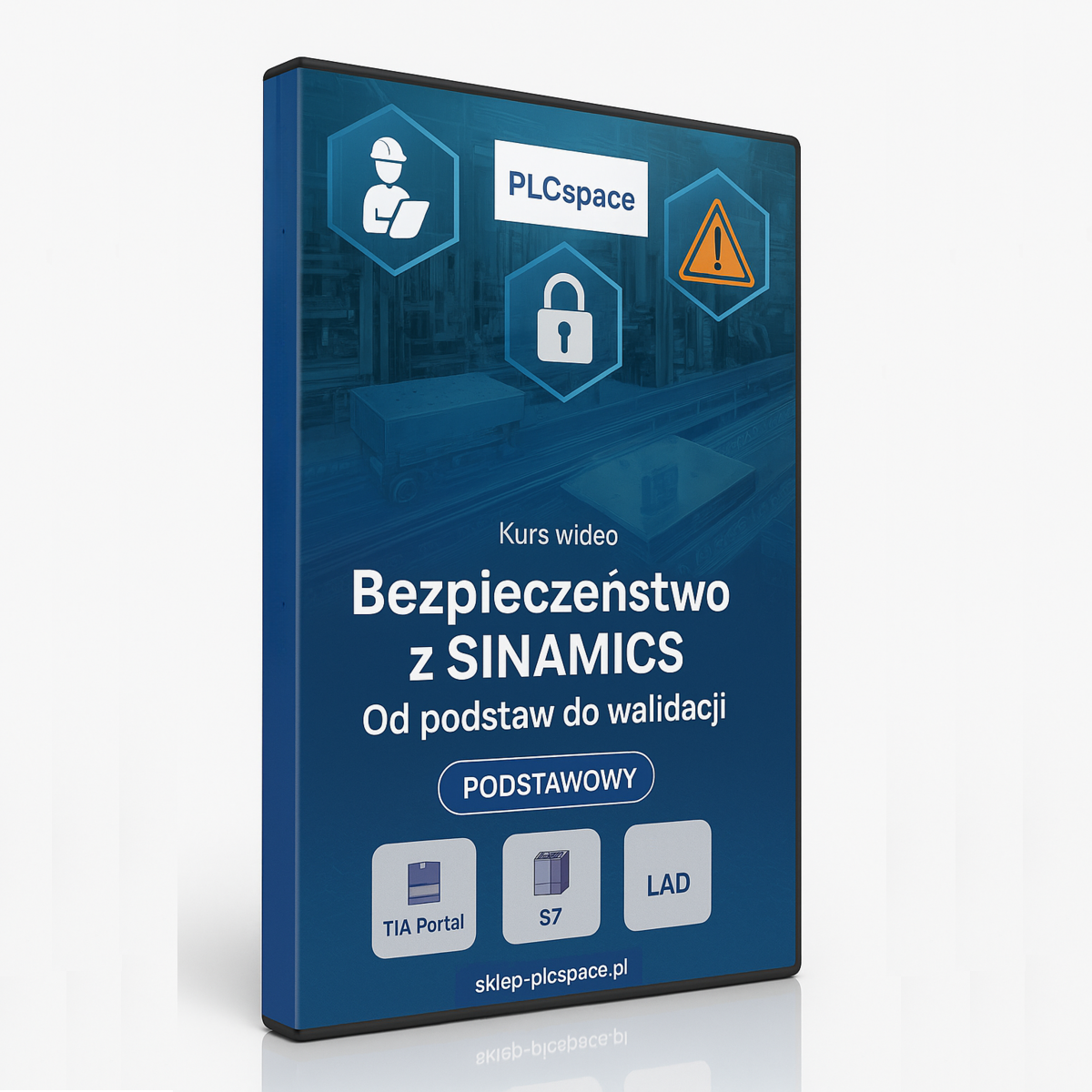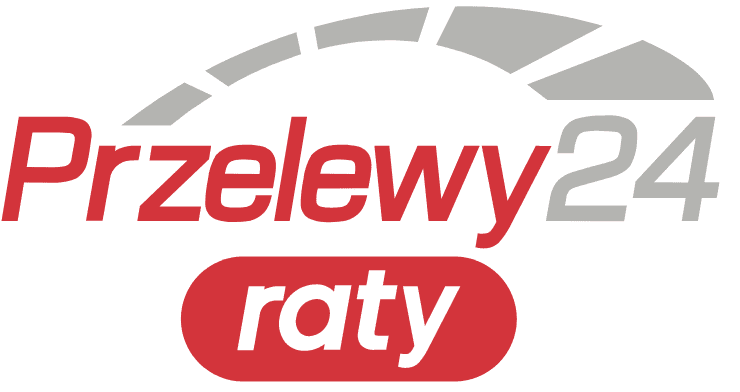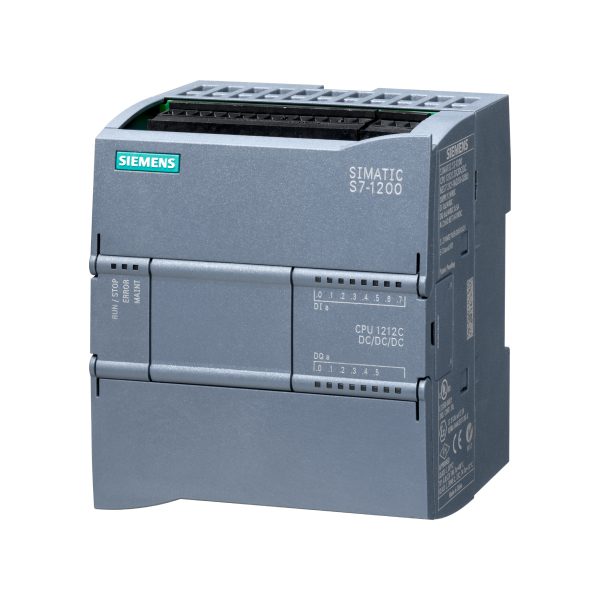I want to become a PLC programmer
- Level:
The development environment used in the course
- Software:
Core unit family used in the course
- CPU:
A set of rules that are used to develop programme code
- Language:
Frequency converter (inverter) family used in the course
- Drive
274.57 €
Co otrzymasz po zapisaniu się na kurs "Chcę zostać programistą PLC"?
Nie martw się, że zostaniesz przytłoczony skomplikowaną wiedzą, która będzie trudna do przyswojenia. Nic bardziej mylnego! Nasz kurs ma na celu wprowadzenie Cię w podstawy programowania sterowników PLC. W ramach szkolenia otrzymasz starannie dobrane materiały:
Kurs programowania PLC Siemens
Sterowniki PLC Simatic to fundament w każdej branży, gdzie automatyka maszyn odgrywa kluczową rolę. Nasz kurs koncentruje się na nowoczesnej rodzinie sterowników PLC – Simatic S7-1200 G2. W trakcie zajęć teoretycznych przekonasz się, że te elastyczne sterowniki doskonale sprawdzają się w obsłudze zarówno prostych, jak i bardziej złożonych projektów.
Kurs „Chcę zostać programistą PLC” pozwoli Ci zdobyć podstawową wiedzę z zakresu programowania sterowników firmy Siemens, nawet jeśli wcześniej nie miałeś z nimi styczności. Zdobędziesz praktyczne umiejętności, które z powodzeniem wykorzystasz w swojej codziennej pracy.
Jeśli posiadasz wykształcenie techniczne i marzysz o karierze w automatyce, ale nie wiesz, jak zacząć, to idealnie trafiłeś! Po ukończeniu naszego kursu programowania sterowników PLC Simatic zaskoczysz swojego przyszłego pracodawcę swoją wiedzą oraz innowacyjnym podejściem do zagadnień.
What is the Siemens Simatic PLC programming course about?
Nasz kurs został zaprojektowany tak, aby wprowadzić Cię w temat programowania od podstaw aż do poziomu średnio zaawansowanego. Tematy, które omówimy podczas szkolenia, są niezbędne w każdym zawodzie związanym z programowaniem przemysłowym. Jeśli chcesz nauczyć się programowania i nadzorowania maszyn w fabryce, znajomość programowania sterowników logicznych PLC Siemens Simatic pomoże Ci lepiej zrozumieć interakcje między poszczególnymi podzespołami.
To szkolenie z PLC koncentruje się na jednym z najpopularniejszych sterowników firmy Siemens, czyli S7-1200 G2. W połączeniu z oprogramowaniem TIA Portal, stwarza ono bardzo efektywne środowisko programistyczne. W ramach naszego kursu masz możliwość wyboru języka programowania: LAD, SCL oraz FBD, co daje Ci elastyczność wyboru najbardziej odpowiedniego dla siebie.
Programowanie sterowników PLC Siemens S7-1200 G2 jest wygodne, ponieważ nie wymaga od Ciebie zakupu dodatkowego oprogramowania ani sprzętu. Wszystkie zadania będziesz realizować w środowisku TIA Portal, które jest dostępne za darmo przez 21 dni. To znacznie więcej czasu, niż potrzebujesz, aby ukończyć nasz podstawowy kurs PLC. Jeżeli potrzebujesz więcej dni, to jest lekcja na ten temat.
Chcesz przekonać się, że nauka programowania sterowników PLC w języku LAD, SCL lub FBD nie wymaga przeszukiwania grubych książek pełnych skomplikowanej terminologii? Masz dość teoretycznych wykładów, które nie pozostawiają trwałych śladów w pamięci? Wybierz nasz kurs programowania Siemens i rozpocznij swoją przygodę z automatyzacją!
Knowledge test:
Is this course for you? Take this test MULTIPLE choice to check it out.
Egzamin Summary
0 of 9 Questions completed
Questions:
Information
You have already completed the egzamin before. Hence you can not start it again.
Egzamin is loading…
You must sign in or sign up to start the egzamin.
You must first complete the following:
Results
Results
0 of 9 Questions answered correctly
Your time:
Time has elapsed
You have reached 0 of 0 point(s), (0)
Earned Point(s): 0 of 0, (0)
0 Essay(s) Pending (Possible Point(s): 0)
Categories
- Not categorized 0%
- 1
- 2
- 3
- 4
- 5
- 6
- 7
- 8
- 9
- Current
- Review
- Answered
- Correct
- Incorrect
-
Question 1 of 9
1. Question
Do the interrupt blocks change the cycle time?
CorrectIncorrect -
Question 2 of 9
2. Question
In which languages can code be written for the S7-1200 PLC?
CorrectIncorrect -
Question 3 of 9
3. Question
What states (values) can the bit assume?
CorrectIncorrect -
Question 4 of 9
4. Question
Is "state 0" returned by
CorrectIncorrect -
Question 5 of 9
5. Question
How many bits does a BYTE type consist of?
CorrectIncorrect -
Question 6 of 9
6. Question
What is the result of a comparison operation?
CorrectIncorrect -
Question 7 of 9
7. Question
What type of memory is defined as ephemeral (loss of data after power failure) ?
CorrectIncorrect -
Question 8 of 9
8. Question
Which data types consist of 32 bits?
CorrectIncorrect -
Question 9 of 9
9. Question
What bytes are included in the address %ID0 ?
CorrectIncorrect
Key information about the course
Przekonasz się, że z przyjemnością poszerzysz swoją wiedzę. Nasz kurs nie ogranicza się jedynie do teoretycznych podstaw programowania. Prezentujemy konkretne rozwiązania, sztuczki i triki, które stosują profesjonaliści w branży PLC. Uwierz nam, po tym szkoleniu Twoi przyszli pracodawcy będą pod wrażeniem Twojego poziomu umiejętności. Nauczymy Cię analitycznego myślenia, które jest kluczowe dla każdego programisty PLC.
Choć praca programisty-automatyka może wydawać się samotna, w rzeczywistości często wygląda zupełnie inaczej. Programiści PLC stają się częścią zespołu, który wspólnie realizuje projekt. Bez obaw! Po naszym kursie poczujesz się jak prawdziwy specjalista, omawiając wyniki swojej pracy z menedżerami, inwestorami i kolegami z zespołu. Pokażemy Ci, jak wybierać optymalne rozwiązania, które uwzględniają czas i koszty ich wdrożenia.
Dowiesz się, jak ich unikać i rozwijać swój warsztat. Większość kursów PLC, które znajdziesz w sieci, ogranicza się do przekazywania teorii. My oferujemy coś więcej – konkretne rozwiązania pułapek i problemów, z którymi borykają się początkujący, często bezradnie rozkładając ręce. Wytłumaczymy, jak ich unikać i dlaczego jest to tak istotne.
Wirtualna fabryka zaprezentuje Ci typowe wyzwania, z jakimi spotykają się automatycy w przemyśle. Opanujesz stres związany z prawdziwą pracą. Dzięki aplikacji Factory I/O będziesz mógł przetestować każde rozwiązanie, które przyjdzie Ci do głowy, bez ryzyka opóźnień w pracy zakładu czy awarii. W bezpiecznym środowisku programistycznym uczysz się szybciej i bezstresowo.
Wielu lat doświadczenia przy dużych projektach pozwala nam przekazać najlepsze praktyki programowania, które wykorzystasz w każdej pracy. W trakcie swojej kariery spotkasz wielu innych programistów, a nie wszyscy będą reprezentować wysoką jakość. Naszym celem jest przekazanie Ci wiedzy i umiejętności, które wyróżniają najlepszych. Nie chodzi tylko o to, abyś nauczył się programować PLC, ponieważ o tym czytałeś w podręcznikach. Dzięki opanowaniu dobrych praktyk w pracy automatyka będziesz wyróżniał się starannością i kreatywnym podejściem do rozwiązywania problemów.
Dlaczego warto wybrać nasz kurs programowania sterowników PLC?
Na rynku dostępnych jest wiele poradników dotyczących programowania PLC Simatic, jednak nasz kurs to zupełnie inny poziom. Jak wygląda naprawdę doskonałe szkolenie?
Example lesson
Jak wygląda szkolenie z programowania sterowników Simatic S7-1200 G2 w środowisku TIA Portal?
Nasze szkolenie z programowania sterowników PLC Siemens Simatic S7-1200 G2 składa się z części i modułów, z których każdy koncentruje się na kluczowych zagadnieniach związanych z programowaniem w językach LAD, SCL lub FBD (do wyboru przy składaniu zamówienia). Nauczysz się, jak efektywnie konfigurować i programować sterownik PLC, co pozwoli Ci na optymalizację procesów w Twojej pracy. Jakie informacje znajdziesz w poszczególnych częściach kursu?
Po ukończeniu wszystkich modułów zdobędziesz praktyczne umiejętności w zakresie programowania sterowników, które będziesz mógł wykorzystać w codziennych obowiązkach. Przekonaj się, że programowanie PLC może być intuicyjne i przyjemne. Zapisz się na nasz kurs „Chcę zostać programistą PLC” już dziś i rozpocznij swoją przygodę z technologią automatyzacji!
-
Downloading the development environment
-
- Registration on the Siemens website
- Which files to download
- TIA Portal installation
- Installation of the PLCsim simulator
-
-
Licences
-
- TIA Portal – Aktywacja licencji
- Factory IO – Aktywacja licencji
- How to renew licences
-
-
Przegląd S7-1200 G2
- Wprowadzenie do generacji S7 1200 G2
- Przegląd kluczowych tematów nowej generacji CPU
- Omówienie komponentów i obsługi S7-1200G2
- Przedstawienie czterech kluczowych filarów
- Różnice między pierwszą a drugą generacją CPU
- Nowe standardy w kontrolerach automatyki S7-1200G2
- Możliwości komunikacyjne i rozszerzona pamięć w S7-1200 G2
- Integracja technologii obiektów do sterowania ruchem
- Elastyczna koncepcja bezpieczeństwa maszyn z zintegrowanymi I/O o wysokim poziomie bezpieczeństwa
- Nowe funkcje sterowania ruchem i uproszczona konfiguracja aplikacji napędowych
- Możliwość zdalnego dostępu do danych diagnostycznych za pomocą NFC
- Wprowadzenie do nowego portfolio modułów sygnałowych i płytek sygnałowych
- Porównanie specyfikacji kontrolerów generacji 1 i 2
- Wskazówki dotyczące migracji istniejących projektów na nową generację
- Podsumowanie korzyści z zastosowania S7-1200G2 w automatyzacji podstawowej
- Elastyczność i oszczędność miejsca w koncepcji bezpieczeństwa maszyn
- Wprowadzenie do funkcji diagnostycznych i analitycznych w S7-1200 G2
- Możliwości optymalizacji kosztów poprzez nową generację CPU
-
Portfolio - Technika napędowa
- Wprowadzenie do tematu SIMATIC i Sterowania ruchem na S7-1200
- Omówienie umiejscowienia S7-1200 G2 w portfolio kontrolerów SIMATIC
- Przedstawienie trzech sposobów, w jakie S7-1200 G2 dodaje wartość w porównaniu do S7-1200
- Wzrost skalowalności i możliwości funkcjonalnego skalowania kontrolerów
- Drastyczne zwiększenie możliwości sterowania ruchem S7-1200 G2
- Możliwość komunikacji IRT z napędami SINAMICS
- Uproszczenie konfiguracji systemu dzięki zintegrowanym obiektom technologicznym
- Wzrost wydajności S7-1200 G2
- Porównanie funkcji sterowania ruchem S7-1200 G2 z innymi kontrolerami SIMATIC
- Porównanie interfejsów sprzętowych S7-1200 G2 z interfejsami starego S7-1200
- Wprowadzenie połączenia PROFINET IRT
- Oczekiwane funkcjonalności
- Porównanie zasobów sterowania ruchem S7-1200 G2 z S7-1500T
- Wskazówki dotyczące optymalnej konfiguracji PLC dla maksymalizacji wydajności sterowania ruchem
- Ustawienie minimalnego obciążenia cyklu komunikacji
- Unikanie powtarzającego się dostępu do bloku danych
-
Technological features
- Wprowadzenie do tematu SIMATIC
- Sterowanie ruchem na S7-1200 G2
- Omówienie zintegrowanej technologii i funkcji kontrolerów SIMATIC
- Przykłady aplikacji sterowania ruchem z S7-1200 G2
- Obiekty technologiczne (TO) w kontrolerze S7-1200 G2
- Funkcjonalność obiektów technologicznych w kontekście sterowania ruchem
- Przykłady aplikacji sterowania ruchem
- Wykorzystanie obiektów technologicznych do realizacji funkcji
- Omówienie funkcji związanych z kinematyką i ich zastosowanie w aplikacjach
- Przykłady maszyn, które mogą być zrealizowane z użyciem S7-1200G2
- Przykład aplikacji latającej piły
- Omówienie funkcji związanych z synchronizacją osi i ich zastosowanie w aplikacjach automatyki
- Wprowadzenie do symulacji aplikacji i technologii obiektów w kontekście S7-1200 G2
- Podsumowanie możliwości S7-1200 G2 w kontekście sterowania ruchem i aplikacji automatyki
-
Wprowadzenie - liczby, kody i typy danych
- Wprowadzenie do sygnałów PLC, które działają na zasadzie wartości binarnych
- Wyjaśnienie grupowania bitów
- Omówienie systemu dziesiętnego
- Przedstawienie systemu binarnego
- Wyjaśnienie konwersji liczb binarnych na dziesiętne oraz odwrotnie.
- Opis systemu ósemkowego
- Omówienie systemu szesnastkowego
- Przedstawienie kodu BCD
- Wyjaśnienie różnych typów liczb całkowitych dostępnych
- Opis sposobu przechowywania liczb całkowitych ze znakiem
- Wprowadzenie do liczb rzeczywistych
- Omówienie różnych typów danych w PLC
-
Podstawy programowania
- Wprowadzenie do oprogramowania Siemens Totally Integrated Automation Portal (TIA Portal)
- Opis funkcji TIA Portal w projektowaniu, operacji i konserwacji systemów automatyki
- Wybór widoku portalu lub widoku projektu w TIA Portal
- Możliwość łatwego tworzenia nowych projektów i konfigurowania urządzeń
- Wykorzystanie katalogu sprzętowego do lokalizacji typów urządzeń
- Konfiguracja i sieciowanie w widokach urządzeń i sieci
- Wykrywanie podłączonych urządzeń przez TIA Portal
- Wymagania dotyczące oprogramowania inżynieryjnego dla różnych modeli PLC Siemens
- Opis programowania PLC w różnych językach programowania zgodnych z IEC 61131
- Różnice między Step 7 Basic a Step 7 Professional
- Organizacja programów PLC w formie liniowej lub modularnej
- Definicja bloków programowych
- Znaczenie pamięci w PLC
- Interakcja instrukcji w programie PLC z pamięcią CPU
- Wykorzystanie tagów w programowaniu PLC
- Typy danych w PLC oraz ich znaczenie dla instrukcji programowych
-
Wprowadzenie do TIA Portal
- Wprowadzenie do TIA Portal, oprogramowania do zintegrowanej automatyzacji od Siemensa
- Omówienie znaczenia TIA Portal w kontekście złożoności nowoczesnych zakładów przemysłowych
- Wzrost liczby narzędzi inżynieryjnych i ich różnorodność
- Harmonizacja narzędzi inżynieryjnych i ich integracja w TIA Portal
- Zakres programowy Step 7 jako kluczowy element TIA Portal
- Integracja WinCC, oprogramowania do wizualizacji i integracji urządzeń operacyjnych
- Włączenie StartDrive, oprogramowania dla świata napędów, do TIA Portal
- Integracja Scout TIA, oprogramowania do konfiguracji funkcji sterowania ruchem
-
Pakiety oprogramowania TIA Portal
- Wszystkie ważne komponenty automatyzacji są zintegrowane w TIA Portal.
- Możliwość programowania kontrolerów, urządzeń peryferyjnych, napędów oraz paneli operatorskich.
- Dostępność funkcji bezpieczeństwa i zarządzania energią w TIA Portal.
- Programowanie kontrolerów SIMATIC z odpowiednim pakietem serwisowym
- Możliwość łatwego aktualizowania pakietów serwisowych
- Nowe oprogramowanie Simatic WinCC Unified
- Nowe funkcje oraz większa elastyczność edytorów i oprogramowania runtime w Simatic WinCC Unified.
- Sinamics StarttDrive
- Możliwość wykorzystania funkcji motion control dzięki Scout TIA.
-
Widoki w TIA Portal
- TIA Portal oferuje dwa różne widoki
- View of the portal
- View of the project
- Menu bar
- Drzewo nawigacji projektu
- Paleta projektów referencyjnych
- Working area
- Inspector's window
- Szybkie przełączania się między otwartymi edytorami
- Archiwizacja projektów
- Funkcja filtru w karcie zadań
-
Układanie okien w TIA Portal
- Podział obszaru roboczego
- Przypinanie jednego z obszarów roboczych,
- Funkcja maksymalizacji obszaru roboczego,
- Otwieranie i zamykania nawigacji projektu,
- Odłączenia widoków,
- Opcja zapisania układu okien
- Tworzenie własnego, w pełni dostosowanego i intuicyjnego środowiska pracy i rozwoju.
-
Języki programowania w TIA Portal
- TIA Portal oferuje potężne edytory programowania
- Języki programowania graficznego,
- Graph to język programowania graficznego
- SCL programming language
- STL to język programowania tekstowego,
- Macierz przyczynowo-skutkowa (CEM)
-
Ustawienia w TIA Portal
- Możliwość ustawienia różnych opcji w TIA Portal
- Ustawienia interfejsu, mnemoniki oraz ogólne ustawienia wyświetlania
- Ustawienia przechowywania
- Przycisk Resetuj
- Możliwość eksportowania i importowania ustawień TIA Portal
- Centralne udostępnianie ustawień TIA Portal
-
Funkcje ogólne w TIA Portal
- System informacji TIA Portal wspiera w konfiguracji i programowaniu projektów
- Funkcja pomocy
- Możliwość wyszukiwania i zamiany tekstu
- Dostępność edytora wyszukiwania z przejrzystą tabelą wyników
- Wyszukiwanie ograniczone do wybranej język edycji
- Możliwość ograniczenia wyszukiwania do konkretnych obszarów nawigacji projektu
- Wyniki wyszukiwania
- Podwójne kliknięcie
-
Introduction
- Prezentacja pełnego zakresu programów Step 7, WinCC i StartDrive w TIA Portal
- Opis dwóch widoków w TIA Portal
- Wyjaśnienie funkcji nawigacji w projekcie
- Możliwość dostosowywania nazw folderów urządzeń w projekcie
- Prezentacja edytora zadań dla różnych urządzeń i komponentów
- Opcje zapisywania i przywracania konfiguracji okien
-
Wskazówki i triki
- Pokazanie wskazówek i trików dotyczących pracy z TIA Portal
- Zmiana ekranu startowego
- Możliwość automatycznego otwierania ostatnio otwartego projektu przy uruchomieniu
- Zmiana domyślnej ścieżki zapisu
- Możliwość zmiany języka interfejsu TIA Portal
- Ustawienie języka dla mnemoników w programowaniu blokowym
- Zmiana typów czcionek, rozmiarów i kolorów w edytorach programowania i skryptów
- Automatyczne dostosowanie ekranów i obiektów ekranowych
- Ustawienie domyślnej ścieżki połączenia do urządzenia
- Możliwość dostosowania interfejsu użytkownika
- Ukrywanie widoków za pomocą przycisków
- Możliwość odczepienia widoków
- Przywracanie domyślnych ustawień
- Możliwość grupowania i rozgrupowywania okien edytorów
- Możliwość zamykania wszystkich otwartych okien i edytorów jednocześnie
- Kopiowanie obiektów i konfiguracji urządzeń między projektami
- Możliwość korzystania z opcji projektu referencyjnego
- Foldery przechowujące dodatkowe pliki, dane konfiguracyjne i logi w projekcie
- Informacje o pliku projektu i jego wersji
-
Help
- Wsparcie w konfiguracji i programowaniu projektów
- Różne sposoby otwierania pomocy
- Opcja kaskady podpowiedzi
- Pomoc w oknie inspektora dostępna
- Organizacja systemu informacji TIA Portal w trzech obszarach
- Możliwość ukrycia obszarów wyszukiwania i nawigacji dla większej przestrzeni treści
- Opcje wyszukiwania z użyciem operatorów logicznych
- Możliwość ograniczenia wyników wyszukiwania
- Wyniki wyszukiwania prezentowane w tabeli
- Możliwość sortowania wyników wyszukiwania
- Otwieranie stron pomocy przez podwójne kliknięcie
- Przycisk synchronizacji
- Możliwość dodawania stron pomocy do zakładek
- Możliwość drukowania
-
Dokumentacja użytkownika
- Możliwość tworzenia dokumentacji użytkownika dla obiektów stworzonych samodzielnie.
- Wywołanie dokumentacji użytkownika
- Dokumentacja użytkownika może być tworzona w formatach tekstowych
- Możliwość stworzenia centralnego katalogu dla dokumentacji użytkownika.
- Włączenie opcji wyszukiwania dokumentacji użytkownika w centralnym katalogu
- Możliwość tworzenia dokumentacji użytkownika za pomocą dodatku Code2Docu.
- Generowanie dokumentacji z funkcji, bloków funkcyjnych i typów danych PLC
- Dokumentacja tworzona przy użyciu markdown jako zdefiniowanego języka znaczników.
-
Bramka wsparcia
- Wprowadzenie do Support Gateway jako źródła informacji
- Otwarcie Support Gateway z menu Pomoc w TIA Portal
- Wyświetlenie listy CPU i modułów używanych w projekcie
- Automatyczne wyszukiwanie odpowiednich wpisów w Siemens Industry Online Support
- Możliwość przeglądania przykładów aplikacji, FAQ, podręczników i pobierania plików
- Wybór kategorii w celu wyświetlenia odpowiednich wpisów w zakładce
- Możliwość wyszukiwania wpisów na forach w Siemens Industry Online Support w TIA Portal
- Wprowadzenie terminu wyszukiwania i przeglądanie wyników
- Możliwość otwarcia wpisu w przeglądarce i dodania nowego wpisu z poziomu przeglądarki
- Ustawienia TIA Portal dla Support Gateway,
- Wybór języka do wyszukiwania informacji w online support
-
Zmienne PLC i ich obszary pamięci
- Wprowadzenie do tagów jako kluczowych elementów systemu programowania
- Opis znaczenia typów danych dla tagów
- Przykład tagu przycisku startu z użyciem typu danych Bool
- Wyjaśnienie adresowania tagów w kontrolerze
- Przechowywanie sygnałów wejściowych w obrazie procesów wejściowych
- Przykłady sygnałów wejściowych
- Kontrola procesu przez obraz procesów wyjściowych
- Przykłady sygnałów wyjściowych
- Opis pamięci bajtowej jako obszaru do przechowywania tagów pomocniczych
- Ograniczenia liczników i timerów
- Wyjaśnienie struktury adresów w pamięci
- Przykład adresowania
- Opis konwencji oznaczania różnych obszarów pamięci
- Dodawaniu symbolu procentu
-
Typy danych elementarnych
- Omówienie podstawowych typów danych
- Typy danych Bool
- Typy danych byte i word
- Typy danych integer i REAL
- Podtypy dla integer, real i word
- Inne podstawowe typy danych obejmują różne typy czasu do przetwarzania dat i godzin
-
Deklaracja i definicja zmiennych PLC
- Dobrą czytelność programu CPU = organizacja przechowywanie danych.
- Tabele tagów PLC – dodatkowe informacje
- Liczba tagów w tabeli tagów
- Kilka tabel tagów = większa przejrzystości.
- Stałe użytkownika
- Tagi wejściowe i wyjściowe PLC – deklaracja i zmiana w widoku urządzenia.
- Sortowanie według nazw, typów danych lub adresów.
- Funkcja Znajdź i Zamień
- Sprawdzane pod kątem składni,
- Funkcje kopiowania, wklejania oraz importu/eksportu
- Pamięć retencyjną
- Wykorzystanie pamięci retencyjnej CPU
-
Widok szczegółowy zmiennych PLC
- Otwieranie widoku szczegółowego
- Widok szczegółowy – co pokazuje
- Użytkownik może łatwo przeciągać i upuszczać tagi do programu użytkownika
-
Monitorowanie zmiennych PLC
- Monitorowanie tagów PLC bezpośrednio przez tabelę tagów PLC
- Włączanie i wyłączanie funkcji monitorowania
- Wymaganie utworzenia tabeli obserwacji
- Tworzenie nowej tabeli w sekcji obserwacji i wymuszeń
- Monitorowanie i kontrolowanie tagów w tabeli obserwacji
- Wprowadzanie i aktywacja zmodyfikowanej wartości tagu
- Załadowania wartości aktywowanego tagu do kontrolera
-
Koncepcja bloków
- Omówienie organizacji i struktury zadań automatyzacji
- Przykład systemu pieczenia
- Podział podsystemów na jednostki techniczne
- Wprowadzenie do strukturyzacji zadań
- Wsparcie TIA Portal w programowaniu i koncepcji bloków
- Opis bloków programowych
- Wady programowania w jednym bloku
- Rodzaje bloków do podzadań w zależności od wymagań
- Główny program
- Implementacja podzadań
- Elastyczna parametryzacja bloków funkcjonalnych
- Możliwość wywoływania FB z innych FB
- Przechowywanie danych programowych
- Użycie funkcji (FC)
- Sekwencyjne wywoływanie wszystkich komponentów systemu
-
Przejrzysty obraz bloków i sekwencji programu
- Dostępność różnych bloków do programowania z różnymi właściwościami
- Bloki organizacyjne jako interfejs
- Funkcje jako bloki
- Bloki funkcji
- Rodzaje bloków danych
- Instrukcje systemowe
- Podział programu na bloki
- Organisational blocks (OB)
-
Praca z blokami programu
- Dodanie nowego bloku
- Features of the block
- Ogólne informacje o identyfikacji bloku
- Informacje o kompilacji, statusie
- Aktywacja ochrony dostępu
- \przypisania bloku do konkretnego CPU lub karty pamięci SIMATIC
- Ustawienia domyślne dla edytora bloków
- Programowanie wywołania bloku
- Usunięcie bloków online
- Usuwanie bloków offline
- Ładowania bloków z CPU do projektu offline
- Bloki dostępne tylko w projekcie offline
- Bloki istniejące tylko online
-
Grupy bloków
- Utworzenie grup bloków
- Przenoszenie bloków do podfolderów
- Możliwość zmiany i dostosowywania bloków
- Tworzenie grup bloków
- Ładowanie do pamięci roboczej CPU w trybie pracy
-
Bloky danych i ich zastosowanie
- Omówienie bloków danych (DB)
- Różnicy między globalnymi blokami danych a blokami danych instancyjnych
- Bloki danych – interfejsy do urządzeń HMI
- Bloki danych instancyjnych
- Dane w blokach danych instancyjnych
-
Znaczenie zmiennych (tagów) i typów danych
- Wprowadzenie do znaczenia tagów w programowaniu
- Opis roli tagów w przechowywaniu wartości w programie
- Trudności w wyświetlaniu danych i ich przetwarzaniu
- Definicja typów danych i ich wpływ na operacje
- Podział na typy danych elementarne i złożone
- Charakterystyka typów danych elementarnych zgodnych z normą IEC
- Opis typów danych złożonych i ich zastosowanie w blokach danych
- Typ danych daty i czasu oraz jego struktura
- Typ danych string
- Typ danych W string i
- Tworzenie tablic i struktur z typów danych elementarnych i złożonych
- Możliwość definiowania własnych typów danych w programie
- Wykorzystanie typów danych PLC do deklaracji tagów
- Możliwość wielokrotnego użycia typów danych PLC w kodzie programu
- Automatyczne aktualizowanie punktów użycia typów danych
-
Tworzenie globalnego bloku danych
- Tworzenie bloków danych
- Możliwość wyboru typu bloku danych
- Wybór między globalnym DB a instancją DB
- Możliwość definiowania atrybutów bloku danych
- Atrybut „tylko do pamięci ładującej”
- Możliwość tworzenia bloków danych z atrybutem zoptymalizowanego dostępu
- Definiowanie zachowania retencyjnego
- Możliwość wyświetlenia kolumny offset
- Preferencja użycia adresu symbolicznego
- Możliwość edytowania wartości domyślnych
- Wartości domyślne edytowane w typie danych PLC
- Monitorowanie wartości tagów w czasie rzeczywistym
- Funkcja „Zapisz zrzuty jako wartości aktualne”
- Funkcja „Załaduj zrzuty jako wartości aktualne”
- Możliwość inicjalizacji wszystkich tagów
- Możliwość zmiany zrzutów i wartości początkowych
-
Prezentacja funkcji
- Otwarcie bloku kodu
- Karta zadań instrukcji
- Sekcja podstawowych instrukcji
- Funkcje Set i Reset
- Funkcje do jednoczesnego ustawiania lub resetowania kilku operandów
- Funkcje typu flip-flop
- Dodatnie i ujemne zbocze sygnału
- Funkcje ustawiające operand na dodatnim lub ujemnym zboczu sygnału
- Funkcje zapytania o zbocze wyniku operacji logicznej
- Funkcja systemowa do wykrywania zbocza sygnału z pomocą instancji
-
Funkcje Set i Reset
- Funkcje ustawiania i resetowania
- Funkcja flip-flop
- Priorytet funkcji ustawiania lub resetowania
- Funkcja setPriority (RS) lub resetPriority (SR)
-
Przegląd funkcji czasowych
- Dostępność różnych funkcji timerów do zadań kontrolnych
- Użycie timerów do generowania impulsów, sekwencji czasowych i pomiaru czasu
- Omówienie głównych funkcji timerów
- Wyjaśnienie działania timerów
- Informacje o akumulatorze czasu
- Instrukcje dotyczące timerów dostępne w edytorach programów
- Podział timerów IEC według standardu programowania IEC 61131-3
- Wymagania dotyczące timerów z rozszerzonymi funkcjami w języku programowania
- Timer SIMATIC dla kontrolerów S7-300/S7-400 oraz ich dostępność
- Rekomendacja dotycząca programowania timerów IEC dla ogólnych zadań kontrolnych
- Zalety timerów IEC w porównaniu do timerów SIMATIC
- Dostępność timerów IEC w zależności od rozmiaru pamięci programowej
- Wysoka precyzja i wydajność timerów
-
Timer opóźnienia załączenia TON
- Opóźnienie sygnału wejściowego na wejściu
- Przykład opóźnienia: 10 sekund.
- Sygnalizacja opóźnionego sygnału na wyjściu Q
- Diagram pulsów ilustrujący sekwencję sygnałów dla opóźnienia w
- Funkcja timera
- Instrukcja Generate On Delay
- Timer IEC jest używany do różnych zadań kontrolnych związanych z czasem.
- Typy danych Time i LTime
- Typ danych LTIME
-
Timer opóźnienia wyłączenia TOF
- Opóźnienie TOF
- Diagram pulsów
- Zmiana sygnału na wejściu
- Instrukcja TOF
- Własny blok danych instancji
- Instrukcja i jej cztery parametry
-
Timer generowania impulsu TP
- Omówienie działania timera TP-
- Wyjaśnienie parametrów
- Opis działania timera
- Resetowanie wyjścia
- Przykłady zastosowania timera TP
- Wskazówki dotyczące użycia instrukcji generowania impulsu
-
Przegląd funkcji liczników
- Funkcje liczników
- Karta zadań – Instrukcje
- Liczniki – norma IEC 61131-3.
- Liczniki SIMATIC
-
Licznik zliczający w górę CTU
- Wprowadzenie do licznika CTU
- Funkcja licznika w górę
- Ustawienie wyjścia Q
- Obserwacja aktualnej wartości licznika
- Resetowanie wartości licznika
- Przykład diagramu impulsów dla licznika CTU
- Zmiana sygnału na CU
- Utrzymanie statusu sygnału Q
- Użycie tagów z globalnego bloku danych
- Wybór odpowiedniego typu danych
- Dodanie licznika IEC do kodu programu
- Tworzenie instancyjnego bloku danych dla funkcji licznika
- Automatyczne generowanie instancyjnego bloku danych
-
Licznik zliczający w dół CTD
- Wprowadzenie do licznika CTD
- Funkcja licznika w dół
- Ustawienie wyjścia Q
- Obserwacja aktualnej wartości licznika
- Resetowanie wartości licznika
- Przykład diagramu impulsów dla licznika CTD
- Zmiana sygnału na CD
- Utrzymanie statusu sygnału Q
- Użycie tagów z globalnego bloku danych
- Wybór odpowiedniego typu danych
- Dodanie licznika IEC do kodu programu
- Tworzenie instancyjnego bloku danych dla funkcji licznika
- Automatyczne generowanie instancyjnego bloku danych
-
Licznik zliczający w górę i w dół CTUD
- Wprowadzenie do licznika CTUD
- Funkcja licznika w górę i w dół
- Ustawienie wyjścia QU, QD
- Obserwacja aktualnej wartości licznika
- Resetowanie wartości licznika
- Przykład diagramu impulsów dla licznika CTUD
- Zmiana sygnału na CU, CD
- Utrzymanie statusu sygnału QU, QD
- Użycie tagów z globalnego bloku danych
- Wybór odpowiedniego typu danych
- Dodanie licznika IEC do kodu programu
- Tworzenie instancyjnego bloku danych dla funkcji licznika
- Automatyczne generowanie instancyjnego bloku danych
-
Przegląd obliczeń i porównań
- Wprowadzenie do korzystania z kalkulatora
- Omówienie podstawowych funkcji arytmetycznych
- Przykłady funkcji trygonometrycznych
- Prezentacja funkcji porównawczych
- Opis działania funkcji porównawczej
- Informacje o dostępnych funkcjach w karcie zadań instrukcji
- Wymagania dotyczące zgodności typów tagów przy używaniu funkcji obliczeniowych
-
Reprezentacja typów danych
- Wprowadzenie do systemu kodowania wartości w komputerach cyfrowych
- Wyjaśnienie systemu binarnego i jego podstawowych zasad
- Opis wartości całkowitych i zakresu wartości w kontrolerze S7
- Metoda konwersji liczb binarnych na liczby dziesiętne
- Użycie dopełnienia do dwóch w reprezentacji liczb ujemnych
- Wprowadzenie do systemu szesnastkowego i jego zastosowania w technologii cyfrowej
- Prosta metoda konwersji liczb binarnych na szesnastkowe
- Opis typu danych podwójnej liczby całkowitej i jego zastosowania
- Wyjaśnienie konwersji liczb binarnych na liczby szesnastkowe
- Wprowadzenie do typów danych zmiennoprzecinkowych i ich zalet
- Opis operacji możliwych do wykonania na liczbach zmiennoprzecinkowych
- Wyjaśnienie sposobu reprezentacji liczb zmiennoprzecinkowych i ich bitów
-
Formaty wyświetlania zmiennych
- Nauka o tagach i ich deklaracji przez typy danych
- Możliwość konwersji tagów na różne typy reprezentacji
- Wyświetlanie tagów w różnych formatach w tabeli obserwacji
- Możliwość obserwacji tagów w dowolnym formacie wyświetlania
- Przykłady formatów wyświetlania tagów
- Wyświetlanie pojedynczego bitu
- Wyświetlanie poszczególnych bitów tagu
- Wyświetlanie zawartości tagu jako liczby szesnastkowej lub BCD
- Wyświetlanie zawartości tagu jako liczby dziesiętnej bez znaku
- Wyświetlanie zawartości tagu jako liczby dziesiętnej ze znakiem
- Wyświetlanie zawartości tagu jako liczby zmiennoprzecinkowej
-
Funkcje matematyczne
- Programowanie funkcji matematycznej w bloku funkcji (FC)
- Dodawanie dwóch liczb całkowitych
- Konfiguracja tagów wejściowych i określenie miejsca zapisu wyniku
- Możliwość zmiany typu danych oraz dopasowanie typów tagów
- Reprogramowanie instrukcji
- Parametry EN (enable input) i ENO (enable output) dla funkcji matematycznych
- Kontrola wykonania operacji
- Wyświetlanie błędów obliczeniowych
- Możliwość włączenia lub wyłączenia sprawdzania obliczeń
- Skutki włączenia ENO oraz sygnały błędów
- Użycie kalkulatora do łączenia obliczeń z wieloma operacjami arytmetycznymi
- Wprowadzanie formuły
- Sprawdzanie błędów, takich jak przepełnienia,
-
Comparison operations
- Funkcja komparatora porównuje wartości dwóch tagów
- Porównywanie różne typy danych
- Funkcje komparatora – programowanie
- Funkcje komparatora – przekształcanie
- Operacja in-range
- Operacja out-range
-
Wartości analogowe w przetwarzaniu danych
- Wprowadzenie do podstawowych zasad przetwarzania wartości analogowych
- Wyjaśnienie, czym jest sygnał analogowy i jakie są typowe wartości w technologii czujników
- Omówienie możliwości modułów sygnałowych w PLC Siemens,
- Przykład zakresu przeciążenia dla modułu sygnałowego Siemens
- Opis procesu próbkowania sygnału analogowego i określenie jego aktualnej wartości
- Wyjaśnienie, dlaczego wartość analogowa musi być przekształcona na system binarny
- Podział zakresu pomiarowego na różne poziomy sygnału
- Omówienie potrzeby zwiększenia precyzji przetwarzania sygnału
- Wyjaśnienie, jak liczba bitów wpływa na dokładność pomiaru
- Wprowadzenie do pojęcia rozdzielczości modułu sygnałowego
- Omówienie różnych rozdzielczości dostępnych w modułach sygnałowych Siemens
- Opis procesu kodowania poziomów do słów danych
- Wyjaśnienie, jak dane są przesyłane z modułu sygnałowego do CPU
- Przykład interpretacji danych
-
Reprezentacja wartości analogowych
- Omówienie interfejsu między modułami sygnałów analogowych a PLC
- Przykład modułu o rozdzielczości 9 bitów i jego reprezentacja w pamięci
- Różnice w krokach reprezentacji wartości analogowych
- Przykład przeliczenia 10V z czujnika analogowego
-
Konfiguracja modułu analogowego
- Konfiguracja dodatkowych modułów na szynie obok kontrolera
- Wybór modułu wejścia analogowego i jego konfiguracja
- Wyjaśnienie różnic między modułami BA, ST, HF i HS
- Utworzenie szablonu kanału dla identycznej konfiguracji wielu kanałów
- Aktywacja różnych komunikatów diagnostycznych w obszarze diagnostyki
- Dezaktywacja nieużywanych kanałów i konfiguracja jednego kanału
- Ustawienie typu pomiaru na napięcie i zakres pomiarowy
- Konfiguracja częstotliwości zasilania
- Ustawienie parametrów wygładzania dla stabilizacji sygnału analogowego
- Definiowanie górnych i dolnych granic w obszarze alarmów procesowych
- Przypisanie adresów I/O dla kanałów w programowaniu
- Obliczenie zakresu adresów
- Ustawienie automatycznej aktualizacji wartości analogowej w cyklu
- Nadanie nazwy dla wartości analogowej w kanale 0 w zakładce tagów
-
Standaryzacja i skalowanie wartości analogowych
- Możliwość podłączenia analogowego czujnika do kanału 0, który dostarcza wartości napięcia od -10 do +10 voltów.
- Wyświetlanie wartości w TIA Portal w zakresie od -27,648 do +27,648.
- Użycie funkcji normx i scalex do uzyskania rzeczywistych wartości, takich jak poziom napełnienia.
- Funkcja normx normalizuje wartość tagu na skali liniowej od 0.0 do 1.0.
- Wprowadzenie najmniejszej i największej wartości tagu, w tym przypadku -27,648 i +27,648.
- Obliczenie nowej wartości wyjściowej normx, gdy wartość tagu poziomu napełnienia wynosi 0, co daje wynik 0.5.
- Funkcja normx oblicza wartość procentową i konwertuje typ danych z integer na L-real.
- Możliwość innych konwersji typów danych w zależności od przypadku użycia.
- Funkcja scalex skaluje obliczoną wartość procentową do nowego zakresu, w tym przypadku od 0 do 1500, aby reprezentować poziom napełnienia.
-
Przegląd typów danych
- Rezerwacja przestrzeni pamięci w kontrolerze do przetwarzania informacji
- Definicja tagów jako miejsc przechowywania danych w programowaniu
- Wymagania dotyczące deklaracji tagów przed ich użyciem w programie
- Omówienie typów danych i ich właściwości w kontekście tagów
- Przykład przypisania tagu do typu danych całkowitych
- Zakres wartości dla typu danych całkowitych w kontrolerze SIMATIC S7
- Przykład konwersji liczby binarnej na dziesiętną
- Predefiniowane typy danych w języku programowania Step 7
- Podział typów danych na typy elementarne, złożone i inne
- Ograniczenie do typów danych elementarnych i ich opcji konwersji
- Informacje o bitach i typach numerycznych w tabeli typów danych
- Wymóg, aby tagi miały ten sam lub porównywalny typ danych przy operacjach
- Możliwości konwersji typów danych w Step7
-
Funkcje konwersji
- Wprowadzenie do konwersji tagów na inne typy danych za pomocą funkcji konwersji.
- Funkcje konwersji dostępne w karcie z instrukcjami
- Dostępne funkcje konwersji
- Dodatkowe funkcje konwersji
- Funkcja Convert
-
Niejawna konwersja typów danych
- Omówienie drugiego sposobu konwersji typów danych
- Wprowadzenie do integracji konwersji typów w funkcjach matematycznych i operacjach porównawczych
- Przykład dodawania całkowitych tagów z różnymi typami danych
- Opis konwersji tagów
- Automatyczne wykonywanie konwersji przez instrukcje
- Wizualizacja konwersji w edytorze programu,
- Znaczenie kolorów w oznaczeniach konwersji:
- Monitorowanie konwersji danych w czasie rzeczywistym i identyfikacja błędów
- Znaczenie oceny wyniku konwersji za pomocą wyjścia ENO,
-
Programowanie konwersji typów danych
- Prezentacja programowania konwersji
- Przykład normalizacji tagu typu BCD16
- Wybór odpowiednich typów danych
- Definiowanie zakresu wartości
- Ustawienie konwersji typu danych
-
Podstawy NFC
- Introduction
- Basics
- Konfiguracja NFC
- Przegląd aplikacji NFC
- Korzystanie z aplikacji NFC dla SIMATIC S7-1200 G2
- Przykład użycia Diagnostyka
- Przykład użycia Przygotowanie i migracja
- Ćwiczenie odczyt i zapis danych przez NFC
- Summary
Software and hardware used
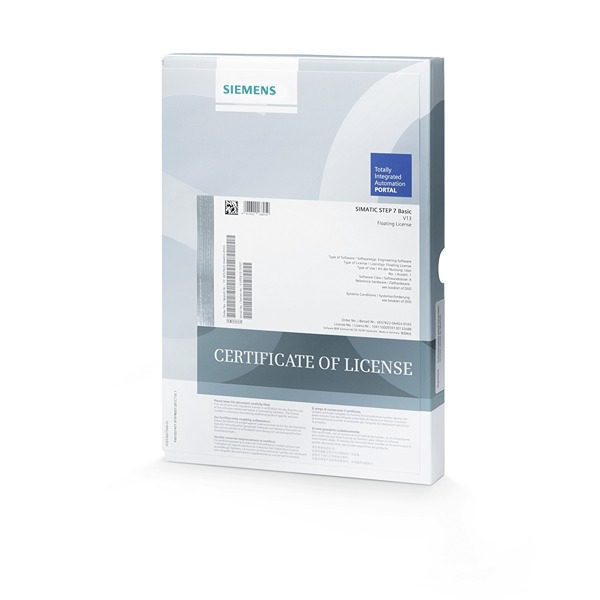
TIA Portal software
Totally integrated automation is a development environment that combines PLC (programming), HMI(visualisation) and startdrive(drive technology).
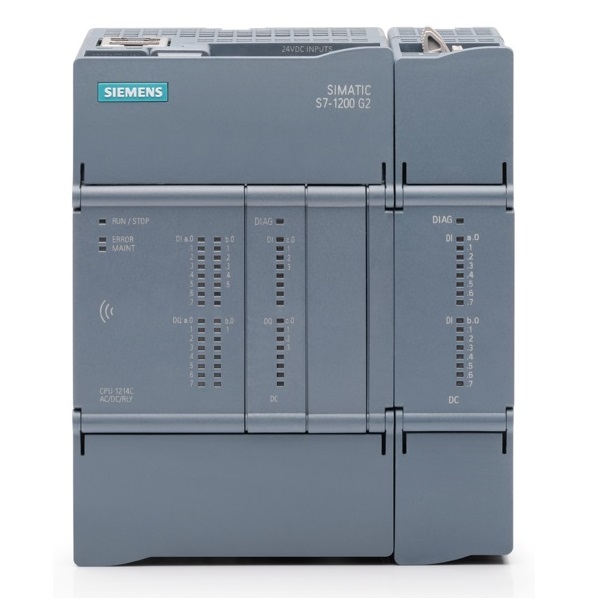
CPU S7-1200 G2
Nowy sterownik, który stworzono jako następcę S7-200 i S7-1200 G1. Charakteryzuje się parametrami nieznacznie słabszymi niż rodzina S7-300. Kilka wersji CPU występujących w rodzinie pozwala na dobór w zależności od wymagań projektu
What will you be able to do after completing the course?
Włożony w ukończenie kursu wysiłek bez wątpienia się opłaci – znajomość programowania sterowników PLC S7-1200 G2 otworzy przed Tobą drzwi do wielu interesujących stanowisk. Wybierz swoją specjalizację w zależności od tego, co najbardziej Cię interesuje.
Learning based on dry theory is a relic. We offer you the chance to explore practical skills, something that really matters to employers. Our training will enable even someone with no programming experience to receive ready-made solutions that will help them find their way in the job market.
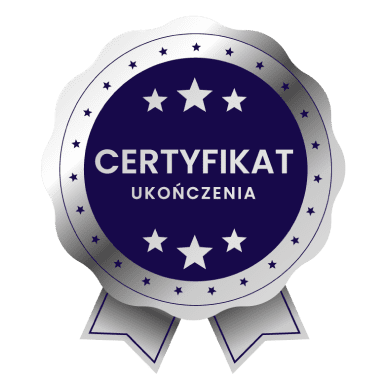
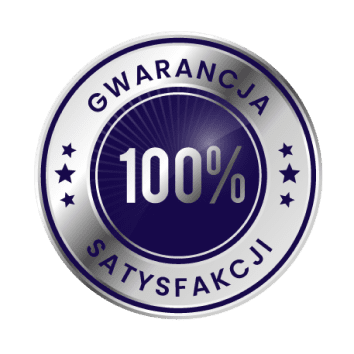
Guarantee
and certificate
If, after 14 days of purchase, you find that it is not for you, I will refund 100% of the course price. Upon completion of the course, you will receive a certificate in two languages - Polish and English.

Frequently asked questions
-
Will I receive a confirmation after my purchase?
Yes, you receive an email. Sometimes emails end up in SPAM or other folders. Please check your mailbox carefully.
-
Which PLC programming language should I choose when starting out?
Jeżeli są Państwo elektrykami, to LAD. Jeżeli mieli Państwo styczność z językami tekstowymi (C, C++, C#, Java itd.), to SCL.
-
Is this course for me if I have never used a PLC?
Yes. The basic courses are just set up so that people with no exposure to Siemens PLCs can learn such skills. The student is guided step by step (as can also be seen in the course table of contents).
-
Can I deliver the course on different computers?
Tak. Materiał z kursu (nagrania wideo) mogą być oglądane na każdym komputerze.
-
What does the online version of the course look like?
You receive the course by email, where there are private links to the videos.
-
What if a problem arises during the course?
Please email me with a description of the problem at: biuro@plcspace.pl.
-
What is the access time for the course?
Bez ograniczeń czasowych
-
Do I need to have any experience with programming?
No. The basic course gives step-by-step all the information needed from 'scratch'.
-
Will I need to purchase a licence for the Factory IO software?
Nie. W kursie są informacje jak uzyskać licencję, aby zrealizować materiał.
-
Will I need to purchase a licence for the PLC development environment?
Nie. W kursie są informacje jak uzyskać licencję, aby zrealizować materiał.
-
Is it possible to return the course?
Tak. Proszę o maila na adres: biuro@plcspace.pl.
-
Will I need a PLC to deliver the course?
Nie. Sterownik rzeczywisty nie jest konieczny. Kurs jest przygotowany w taki sposób, że można go zrealizować także na sterowniku wirtualnym. Wszystko zależy od tego, czym dysponuje kursant.
-
How do I buy a course?
Wystarczy kliknąć przycisk Dodaj do koszyka i uzupełnić formularz oraz dokonać płatności.
-
When does the course start?
Natychmiast po opłaceniu
Buy as a set and save
Select at least 2 courses from the list and the first free book item (three selections in total) and an automatic discount of 25% will be calculated in your basket.
If you want to find out more about a particular course, click on its name and the page will take you to its offerings.
Companies that have benefited from our courses




































Feedback from students
 Stanislaw
Stanislaw
What sets this course apart is the opportunity to acquire practical, concrete knowledge. Everything is clearly explained. Definitely recommended!
 Marcel
Marcel
After going through the course, I know what the components of the programming environment are and what to do step by step. Now I feel confident and know what I am doing
 Leon
Leon
Course delivered in a very accessible way. Contains a lot of interesting and useful information.
 Michael
Michael
I can honestly recommend the course. It is solid and factual knowledge. I will definitely be buying more.
 Victor
Victor
Thanks to the course, I have decided to go further in this direction. The goal is to look for a more challenging and better job
 Peter
Peter
The course prepared by Mr Tomasz is distinguished by its high level of content and meticulously prepared lessons. They are planned in a clear and sensible manner, making it easier to assimilate knowledge and return to the material if necessary. An additional advantage is the possibility of a free consultation.
 Nikodem
Nikodem
Definitely recommended! The facts themselves, no unnecessary dwelling on issues.
 Ignatius
Ignatius
This is my first course, certainly not my last. I am impressed with the substantive quality of the knowledge.
 Tymon
Tymon
Everything clearly explained, you can really learn a lot. Lots of practical information and examples to help you remember everything. In my opinion, it is worth using this form of learning because you can learn anytime and anywhere. It is practical and convenient.
You may also be interested in:
- Level:
The development environment used in the course
- Software:
Core unit family used in the course
- CPU:
A set of rules that are used to develop programme code
- Language:
Frequency converter (inverter) family used in the course
- Drive
274.57 €
- Level:
The development environment used in the course
- Software:
Core unit family used in the course
- CPU:
A set of rules that are used to develop programme code
- Language:
Frequency converter (inverter) family used in the course
- Drive
228.77 €
- Level:
The development environment used in the course
- Software:
Core unit family used in the course
- CPU:
A set of rules that are used to develop programme code
- Language:
Frequency converter (inverter) family used in the course
- Drive
228.77 €
- Level:
The development environment used in the course
- Software:
Core unit family used in the course
- CPU:
A set of rules that are used to develop programme code
- Language:
Frequency converter (inverter) family used in the course
- Drive
274.57 €
